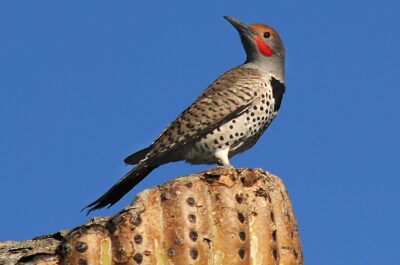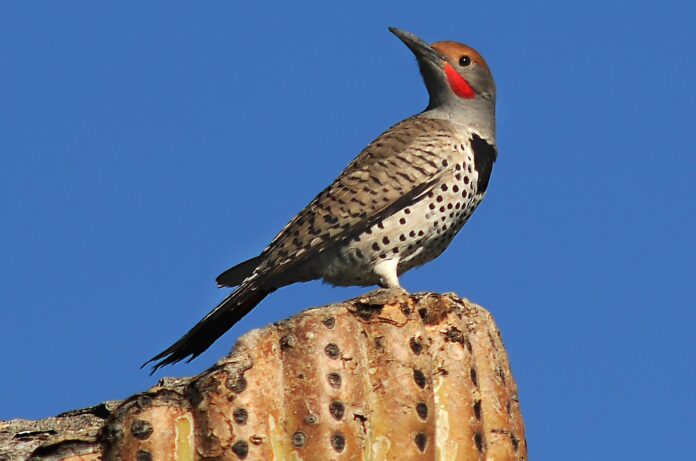BY HARRY WEEKES

Each spring I offer a Friday afternoon Creativity Workshop called “Kestreling.” Since it takes a while before kestrels actually return, we fill our first classes with other bird distractions. So far, these have been getting familiar with eBird (an online bird information nexus) and also setting up a Fantasy Bird Challenge. Fantasy Birding is like other fantasy ‘sports’ in that students choose various locations in the U.S. where they want to bird on specific days and then collect the birds that were actually recorded at that site. You can be in Hawaii one day, Maine the next, and in the Aleutians the day after that. We have been at this a week and I am already 100 birds behind the leading student. For some reason, I thought at trip to Hawaii would be better than the “Tropical Tip of Texas.” I was wrong.
You might read the above and think, as many people do, “This guy is crazy about birds.” (Or, more simply, “This guy is crazy.”) Well, I do like birds, but not for the reasons or in the ways that most people think.
I am not an active life-lister. I am not planning on a Big Year (where you try to see as many birds as possible in the U.S. in one year). I don’t spend my weekends poring over maps and news feeds to see where birds are moving or emerging or irrupting. I am not someone who can rattle off every bird I see or name every sound in the woods. In fact, I probably consult my bird book more than anyone, except with a dozen or so real knowns—robins, magpies, mallards, great blue herons, etc.
The reasons I like birds are much simpler. And the most recent example was this:
It was the end of the state hockey tournament, and we were driving home from my daughter’s game—a nail-biting loss in the finals. It was Sunday in early March, a little bit after 4 p.m. The light was just turning the hills east of Hailey orange. We were in the midst of a discussion of the game, filled with all the usual commentary of emotionally invested fans. We turned north onto Buttercup.
There are seemingly dead, leafless cottonwoods here. A bird undulated across the sky. Up. Then down. Toward the end of the down, the wings opened, and the sun highlighted the red-orange-brown color of its underwings, revealing this bird as a flicker. A northern flicker.
That moment is held in my mind. An instant, really. A little bird, a flash of color. No more than a second in a day that has 86,400 seconds. And then, in the next second, I am back to talking about why a ref would not make a call. I am fairly certain I am the only one who saw the bird.
I like birds because they are little wild gifts. Sometimes, you go out and look for them. You sort through all of the avian presents in the landscape looking for that particular one. A small tuft of feathers perched on a wire, tail bobbing. American Kestrel. Other times, and more often, the presents find you. A Great-blue Heron cuts low across the landscape, its slate blue in stark contrast to the deep brown and maroon of the willows that line the creek. A pair of Mallards drop out of the sky, wings set, head for water. A Magpie sitting under the stoplight pecks at a frozen and, until now, forgotten tortilla.
The smallest amount of awareness offers so much. Just seeing the bird. This is what I am working on with my students. Simply paying attention.
Harry Weekes is the founder and head of school at The Sage School in Hailey. This is his 48th year in the Wood River Valley, where he lives with Hilary and two of their three baby adults—Penelope and Simon. The other member of the flock, Georgia, is currently fledging at Davidson College in North Carolina.

